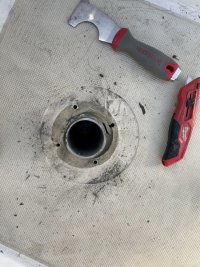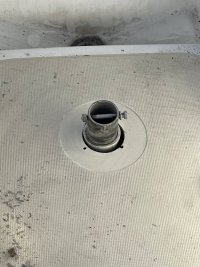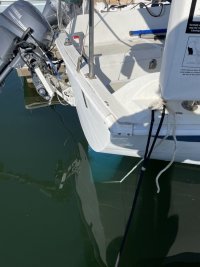gargrag
Member II
Hi, dear Ericson community
our E25+ had a soft spot close to the tiller head, so I decided to embark on fixing the situation.
I made my way inside the bilge and found a problem worse than expected.
PO had used silicone WHYYYYY to seal the plate that's below the tiller head, and over years it leaked and rotted the core.
first question:
In order to properly clean and re-bed the plate, I would need to remove the tiller head, but I'm not sure whether that's what's holding the rudder or not. Any help here would be much appreciated See picture:
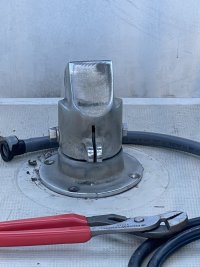
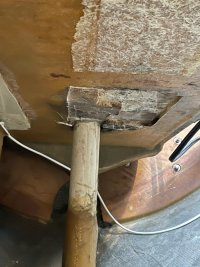
I removed all the rotten core, and I'm thinking of two options:
1 - replacing the core with plywood and make another epoxy/fiberglass/plywood sandwich
2 - use thickened epoxy with fiberglass to fix it (it is not a big portion.
What do you think about going 100% thickened epoxy?
our E25+ had a soft spot close to the tiller head, so I decided to embark on fixing the situation.
I made my way inside the bilge and found a problem worse than expected.
PO had used silicone WHYYYYY to seal the plate that's below the tiller head, and over years it leaked and rotted the core.
first question:
In order to properly clean and re-bed the plate, I would need to remove the tiller head, but I'm not sure whether that's what's holding the rudder or not. Any help here would be much appreciated See picture:


I removed all the rotten core, and I'm thinking of two options:
1 - replacing the core with plywood and make another epoxy/fiberglass/plywood sandwich
2 - use thickened epoxy with fiberglass to fix it (it is not a big portion.
What do you think about going 100% thickened epoxy?


